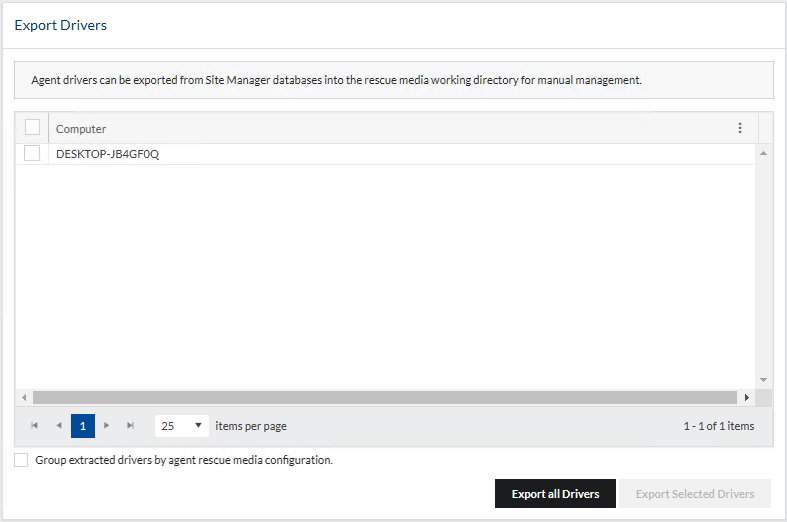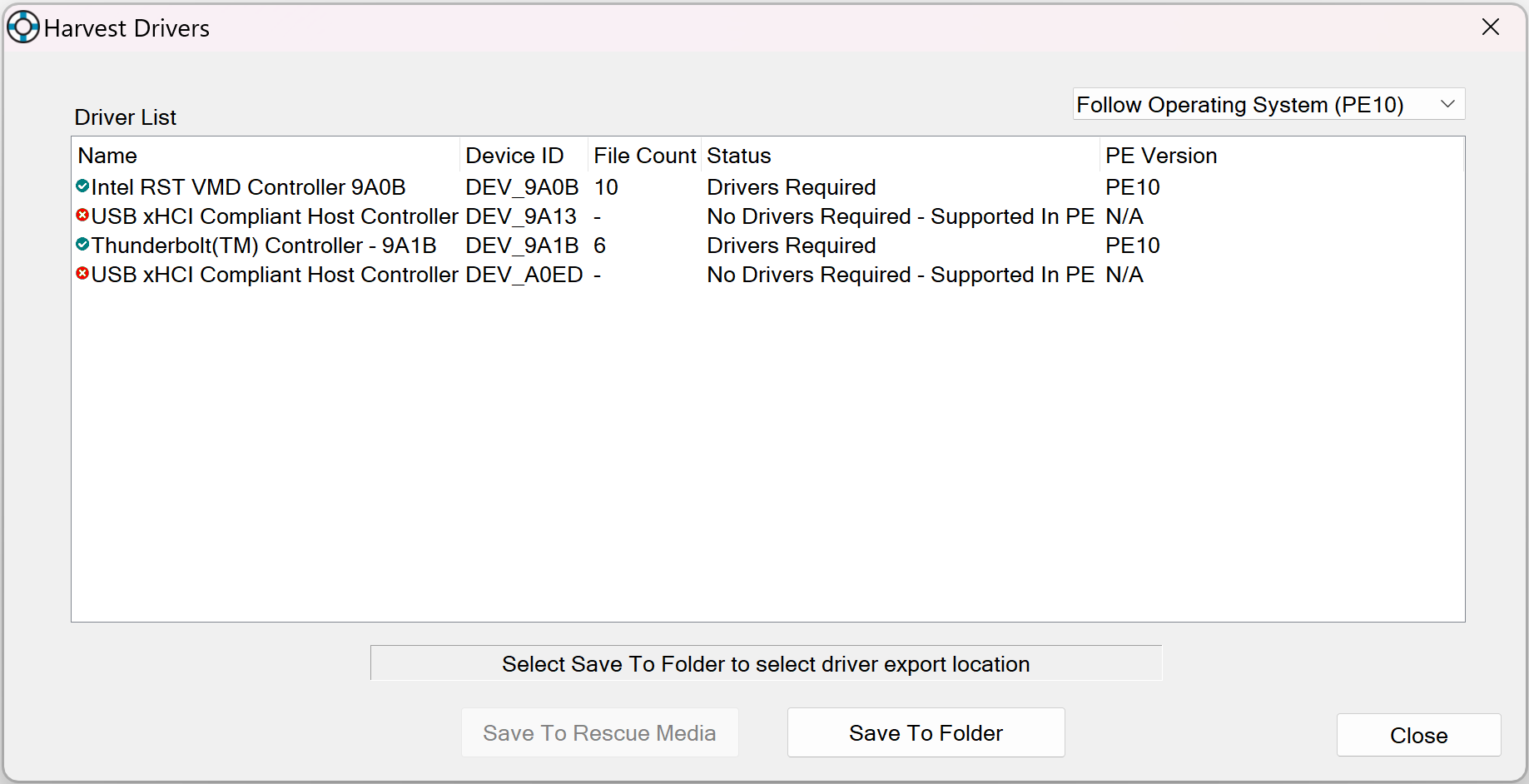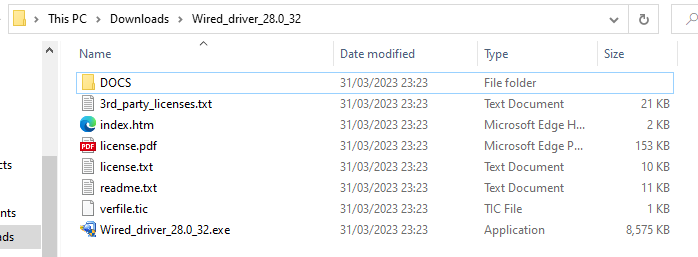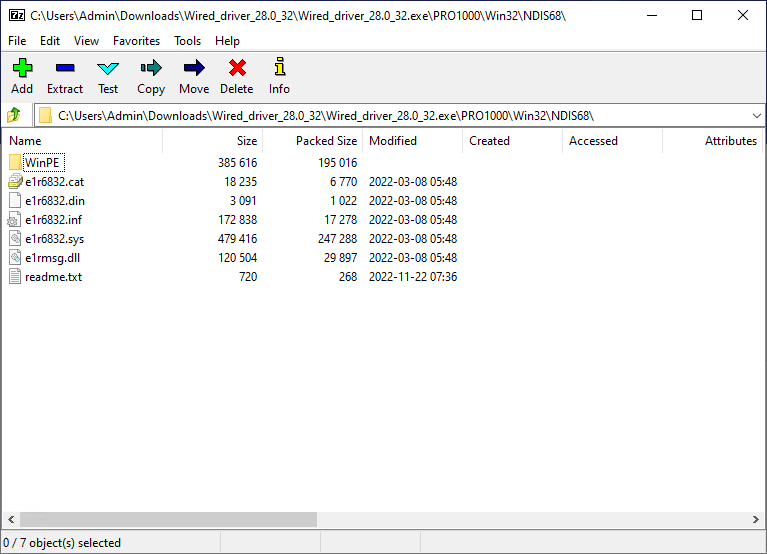In this article:
This article contains detailed information about managing drivers in Macrium SiteDeploy®, different methods on how drivers are automatically included in the deployment, and how to manually add drivers to the deployment media.
Why are drivers important when deploying?
Drivers are pieces of software that enable an operating system to communicate with hardware devices. Drivers are important during deployment for two main reasons:
Hardware access in the deployment media - The deployment media is based on the Windows Preinstallation Environment (WinPE). This is essentially a lightweight operating system, we add Macrium components to this operating system so that golden images can be created and deployed. This enables the deployment media to be booted on bare metal machines. As a result, drivers are needed so that WinPE and the Macrium PE Agent are able to communicate with the hardware on the computer.
Macrium ReDeploy - When a golden image is deployed, whether this is a centrally initiated deployment or a target-initiated deployment, Macrium ReDeploy will run automatically to "inject" storage drivers into the deployed operating system. This will ensure that the deployed operating system is bootable on the target hardware once the deployment has been completed. As a result, the correct storage driver for the target computer's hardware must available. This article contains more information about Macrium ReDeploy.
There are several ways that drivers can be included in the rescue media.
Site Manager Agent drivers
When deployment media is created in Macrium SiteDeploy®, the Site Manager's driver database will be automatically included. When the Site Manager Agent is installed on a computer, drivers for the agent's hardware, which is not already supported in Windows PE, will be copied to the Site Manager server and stored in a database. This database is drivers.db found at C:\ProgramData\Macrium\SiteManager. Site Manager automatically requests new drivers from agents if a hardware change is detected and drivers of removed computers will be deleted from the database, this ensures that the database has drivers that are up-to-date with the agents' hardware.
These drivers are automatically included in the deployment media.
Drivers can also be extracted from the database in the 'Rescue Media' tab of the Site Manager settings. Driver export destinations depend on the name of the agent; drivers from, say, AGENT will be copied into the drivers\exports\AGENT subfolder in the Rescue Media working directory (this folder will be created automatically). Alternatively, the exported drivers can be grouped by the Windows PE configuration suitable for the respective agent, this is controlled by the checkbox. For example, if AGENT was a Windows 10 machine then drivers would be exported to drivers\exports\PE10x64\AGENT.
This can make it easy to copy the drivers from the Site Manager server to a SiteDeploy® instance in the event that Site Manager and SiteDeploy® are running on different computers or to share drivers between multiple instances of Site Manager and SiteDeploy®.
WinPE in-box drivers
Windows PE ships with a set of in-box drivers that supports a wide variety of hardware. As a result, hardware will often be supported in the deployment media without any further action needed. This is shown when the driver harvester is used on a Windows operating system 'No Drivers Required - Support in PE' indicates that the in-box driver support can be used for that hardware device.
Driver Harvest
The 'Driver Harvester' enables drivers to be harvested from a Windows operating system, this can be especially useful when deploying to multiple endpoints with the same hardware and one or more of the endpoints contains a Windows operating system. The 'Driver Harvester’ tool can be downloaded from the ‘Deployment Media’ page of SiteDeploy® and run on the target endpoint. Devices that are supported in Windows PE by default will be shown as ‘No Drivers Required – Supported in PE’ in the ‘Status’ column. The driver files, for devices that are not supported in Windows PE, can be saved to a folder using the 'Save To Folder' button:
These drivers can then be moved to the ‘Drivers’ folder of the rescue media working directory as shown below:
Where to place your custom drivers
Place your drivers in the subfolder according to the version of Windows PE you require.
| SubFolder Version | PE Ver | Arch | Example path |
|---|---|---|---|
PE10x64 | PE10 | 64 bit | C:\ProgramData\Macrium\SiteManager\RescueMedia\Drivers\PE10x64 |
PE10x86 | PE10 | 32 bit | C:\ProgramData\Macrium\SiteManager\RescueMedia\Drivers\PE10x86 |
PE3x64 | PE3 | 64 bit | C:\ProgramData\Macrium\SiteManager\RescueMedia\Drivers\PE3x64 |
PE3x86 | PE3 | 32 bit | C:\ProgramData\Macrium\SiteManager\RescueMedia\Drivers\PE3x86 |
Please note:
- After placing drivers in these folders, you need to rebuild deployment media in order to include the drivers.
- You can create any folder organization eg. /dell/ underneath the appropriate SubFolder to organize drivers
- PE3 is based on Windows 7 kernel in which case Windows 7 compatible drivers should be used with this version of Windows PE; accordingly, PE10 uses Windows 10 kernel and should use appropriate drivers
Manufacturer driver packs
In the event that drivers cannot be added to the deployment media using one of the above methods, driver packs can be manually downloaded from the system/hardware device manufacturer's website and added to the relevant folder above. Below are links to some system manufacturer's driver website pages:
Lenovo - https://support.lenovo.com/us/en/
Dell - https://www.dell.com/support/home/en-uk?app=drivers
HP - https://support.hp.com/gb-en/drivers
ASUS - https://www.asus.com/support/Download-Center/
acer - https://www.acer.com/gb-en/support/drivers-and-manuals
msi - https://www.msi.com/support/download
Drivers are made up of the following files:
- .inf file. This contains a description of the driver and its associated files. It will include a list of hardware it supports and what operating system and CPU type it supports.
- .sys file. This is the driver software.
- .cat file. This is a list of included files with their cryptographic hashes or thumbprints.
It may also contain supplementary files containing localized text etc.
If driver packs are distributed as an executable and not a zip archive, there are two methods to extract the relevant driver files:
7-Zip
7-Zip is a free and open-source file archiver. (https://www.7-zip.org)
Using third-party tools, it is possible to open the archive of the executable and manually extract files from inside it. One such tool is 7-Zip a free, open-source archiving tool.
In the example below, 7-Zip has been used to open the archive of a Dell Network Adapter to extract the relevant driver files. This will allow the deployment media to communicate with the network adapter.
Once you have extracted the installer, you can locate where the driver files are located. Depending on how the installer is constructed, it may be necessary to extract further files. For example, driver files may be located in a cabinet file (an archive file format), within the executable.
By opening the cabinet file, the relevant files can be extracted. These files can then be added to the relevant folder shown above.
Temp
The second way to extract the driver files from the installer is by running the installer. When the installer is running, these files are often stored in the %Temp% folder.
You can access this folder by pressing the Windows + R keys. This will open the ‘Run’ search menu. In the search box, enter %Temp% and press enter.
By checking the folders located in %Temp%, you can often locate these driver files.
For further support downloading drivers, we recommend contacting the system/hardware manufacturer directly.



